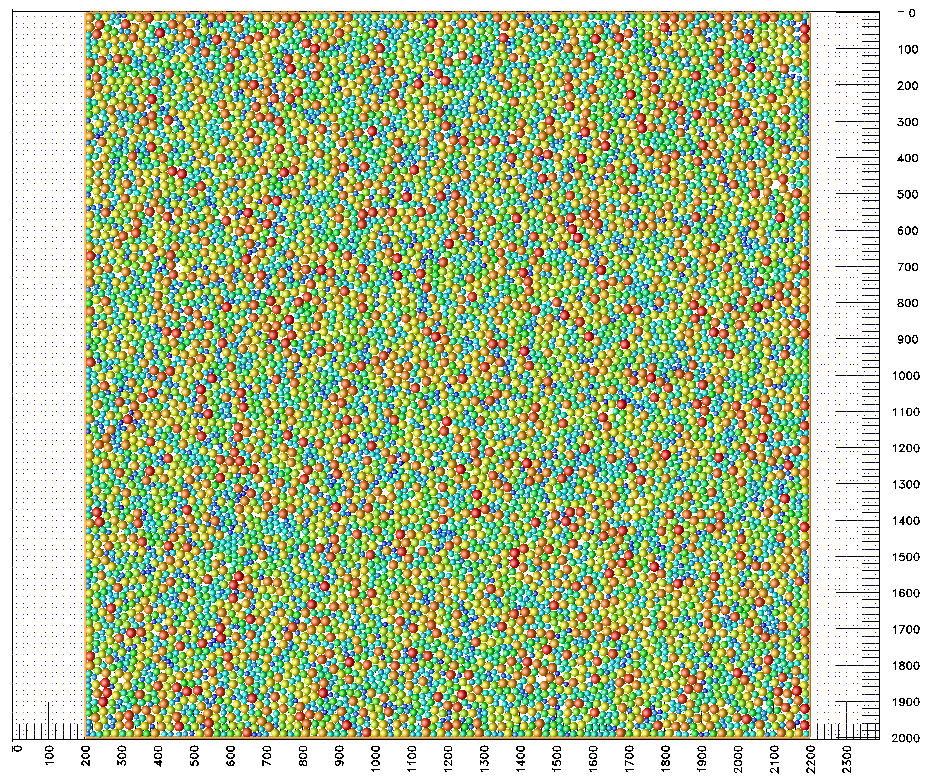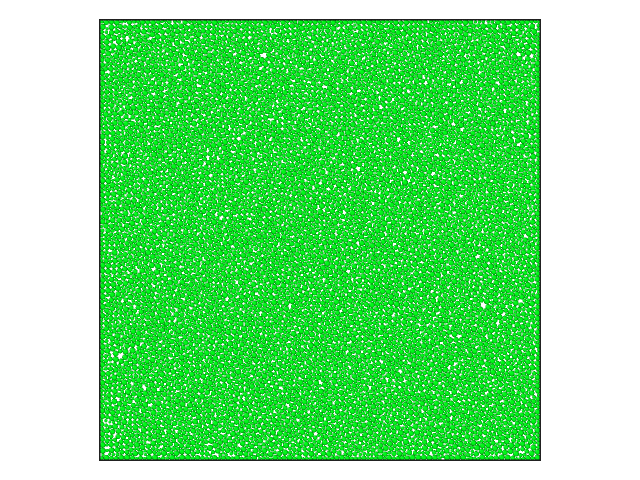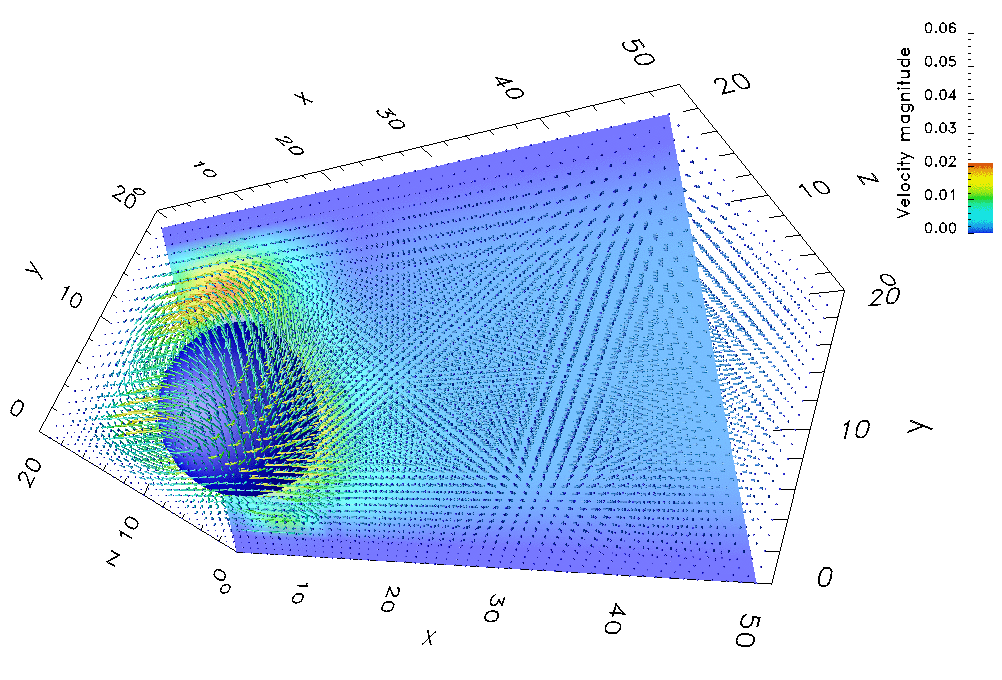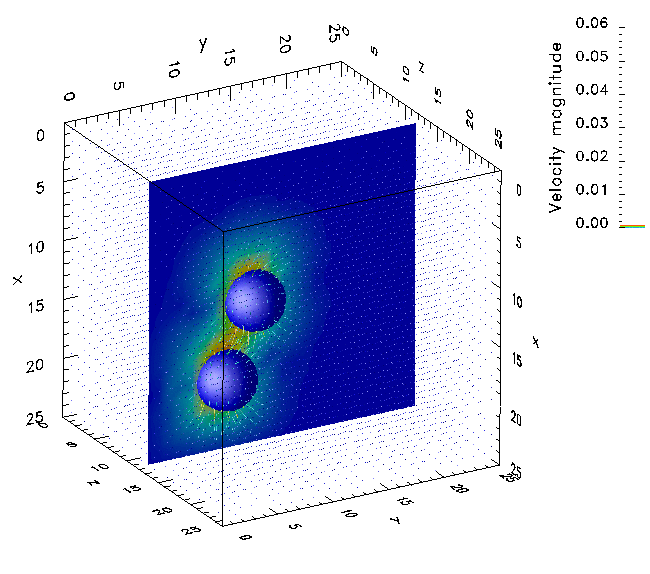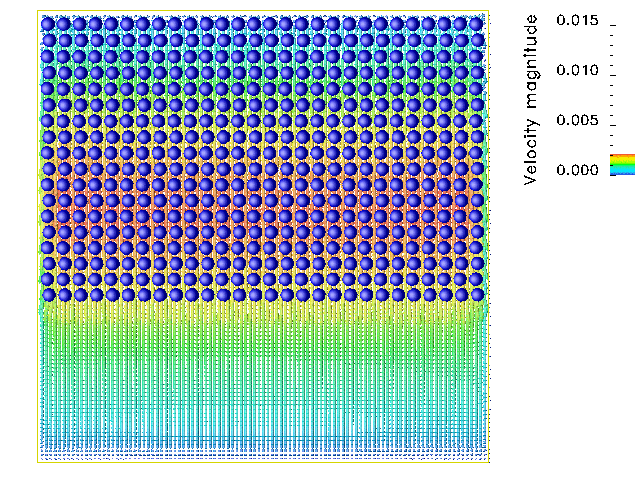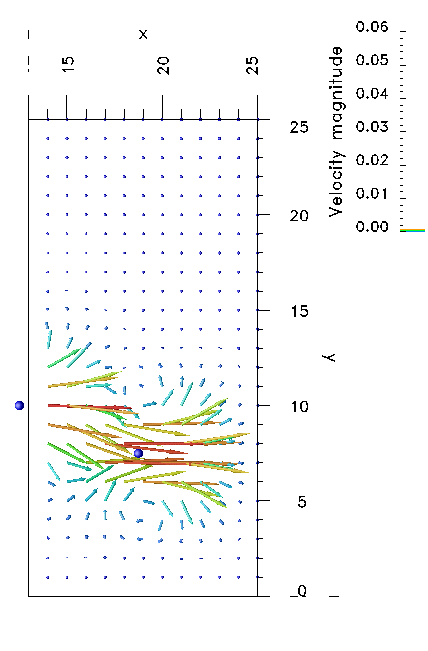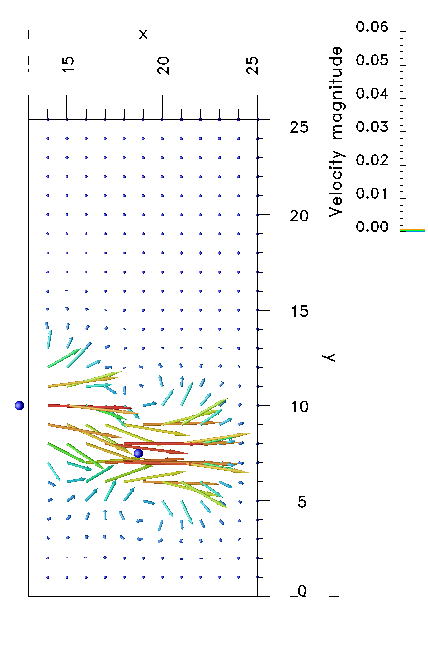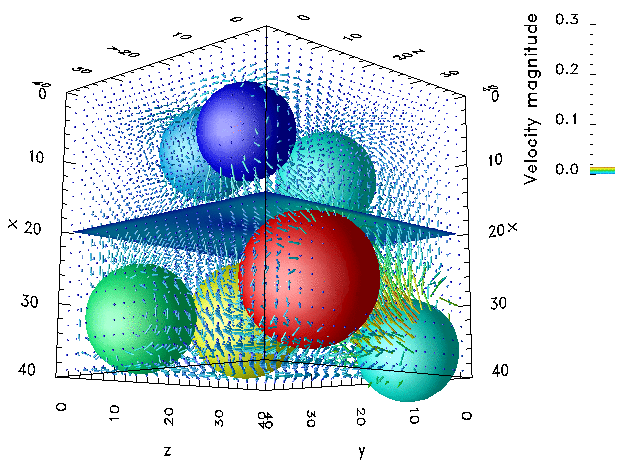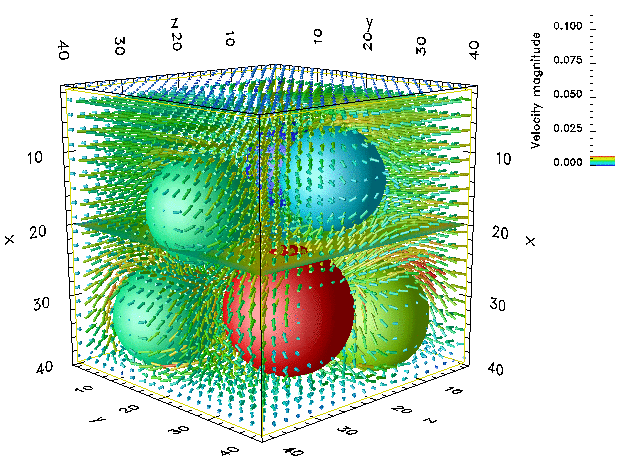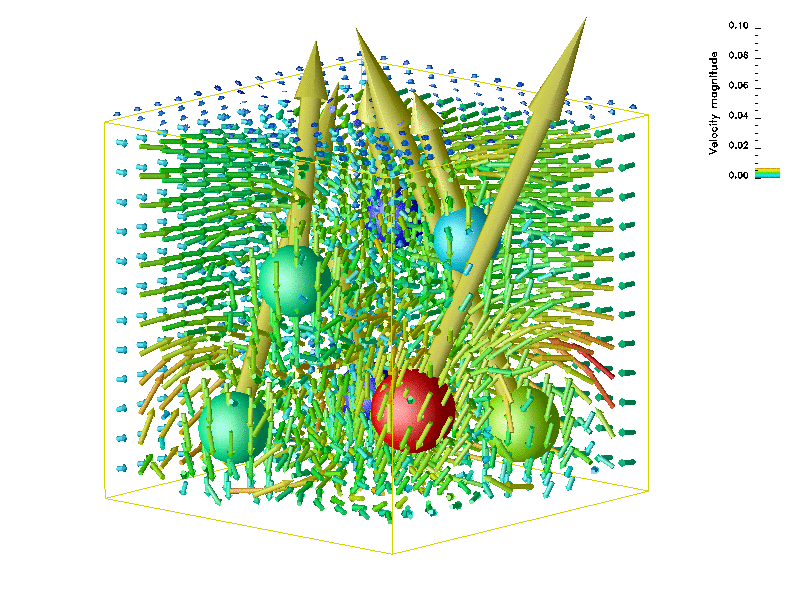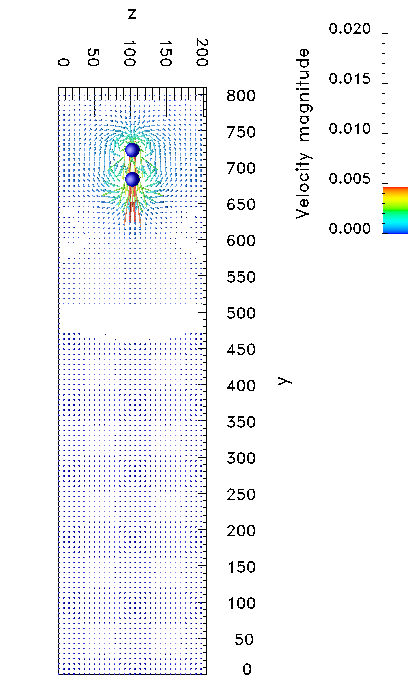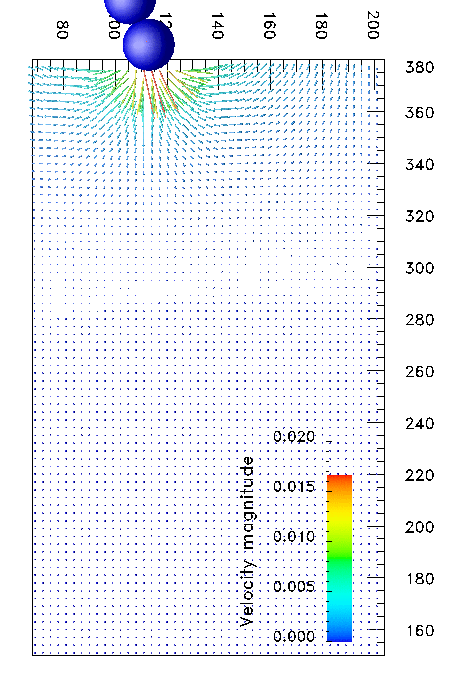Capabilities of the Center for Advanced Vehicular Systems (CAVS) and the Engineer Research and Development Center (ERDC) were joined in a recent collaboration on modeling of large particle assemblies in fluid.
The ERDC team, formerly led by the now-retired John Peters, is led by researchers Laura Walizer and Wayne Hodo. Their research experience is in the Discrete Element Method based modeling (DEM) and experimental validation techniques. The DEM portion of the coupled system calculates forces on particle-particle and particle-wall interactions, including complex bonding and rotational resistance.
A team led by Dr. Sergio Felicelli, former CAVS associate director and presently Department Chair at the University of Akron, along with CAVS assistant research professor Bohumir Jelinek and mechanical engineering student Daniel Johnson developed a capability to calculate hydro-dynamic force and torque exerted by fluid on particles based on lattice Boltzmann model, adopting an immersed moving boundary condition to allow interaction with the freely moving particles. The most valuable feature of the new fluid-particle interaction model is a sub-grid resolution of the fluid flow at the solid-fluid boundary, which increases accuracy of the force and torque calculation. The fluid forces are passed to DEM system, which integrates equations of motion. Large-scale computational resources and excellent scalability of the applied algorithms allow researchers to analyze behavior of a large assembly of particles given their basic physical properties. The ultimate goal of the DEM-LBM coupled model is to provide insight on the solid-fluid interactions occurring at the nano-scale. In addition, the DEM model has the capability for determining the mechanical properties at nano-to-micron length scales for discrete or heterogeneous systems.
Following are demonstrated features of a coupled DEM/LBM model.
Particle assembly without fluid under compression. Particle color represents magnitude of the vertical component of total force on particles.
Spherical particle settling in a rectangular duct. Particle interacts with fluid, fluid interacts with walls. Non-slip boundary condition is applied for fluid flow at solid surface.
Spherical particle settling in a rectangular duct. Particle starts slightly off-center, then settles in the center of the duct.
Multi-particle capability. Similarly to car racing, second particle utilizes a draft from the fluid flow behind the first particle
to gain acceleration and passes the leading particle.
Model including torque exerted by fluid on particles. Comparison of a system with and without torque. Arrows represent fluid velocities. Rotation of particles is evident after introducing torque. Particles are shown is a scale of 1:10.

